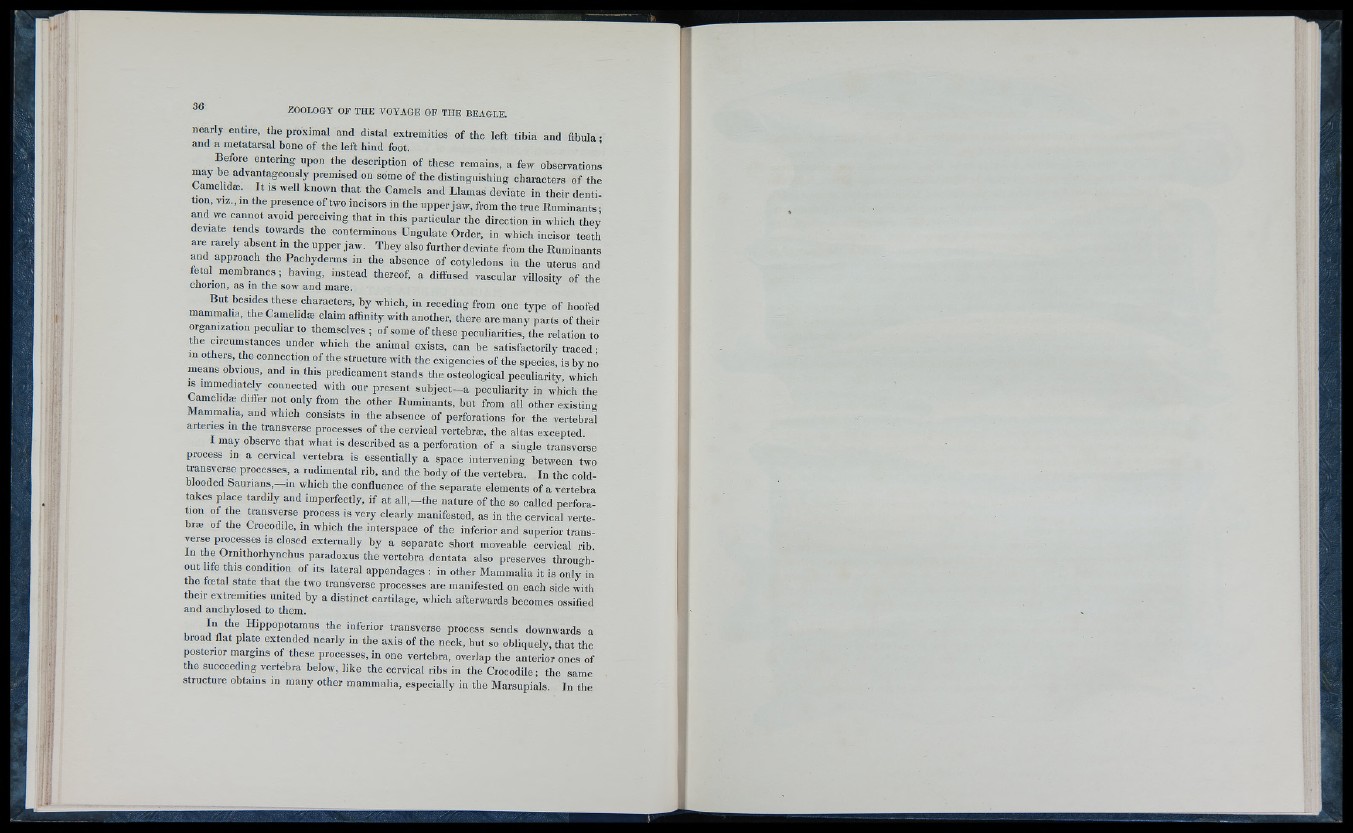
nearly entire, the proximal and distal extremities o f the le ft tibia and fibula •
and a metatarsal bone o f the le ft hind foot. ’
Before entering upon the description o f these remains, a few observations
may be advantageously premised on some o f the distinguishing characters o f the
Camehdæ. It is well known that the Camels and Llamas deviate in their dentition,
V IZ ., m the presence o f two incisors in the upperjaw, from the true Ruminants •
and we cannot avoid perceiving that in this particular tlie direction in which they
deviate tends towards the conterminous Ungulate Order, in which incisor teeth
are rarely absent in the upper jaw . They also further deviate from the Ruminants
and approach the Pachyderms in the absence o f cotyledons in the uterus and
fetal membranes; having, instead thereof, a diffused vascular villosity o f the
chorion, as in the sow and mare.
But besides these characters, b y which, in receding from one typ e o f hoofed
mammalia, the Camehdæ claim affinity with another, there are m any parts o f their
organization peculiar to themselves ; o f some o f these peculiarities, the relation to
the circumstances under which the animal ex ists, can be satisfactorily traced;
in others, the connecfion o f the structure with the ex ig en cies o f the species, is by no
means obvious, and m this predicament stands the osteological peculiarity, which
IS immediately connected with our present s u b j e c t - a peculiarity in which the
Camehdæ differ not only from the other Ruminants, hut from all other ex isting
Mammalia, and which consists in the absence o f perforations for the vertebral
arteries in the transverse processes o f the cervical vertebræ, the altas excepted.
I may observe that what is described as a perforation o f a sing le transverse
process in a cervical vertebra is essen tia lly a space intervening between two
transverse processes, a rudimental rib, and the body o f the vertebra In the cold
blooded S a u r ia n s ,-in which the confluence o f the separate elements o f a vertebra
takes place tardily and imperfectly, i f at a l l , - t h e nature o f the so called perforation
o f the transverse process is very clearly manifested, as in the cervical vertebræ
o f the Crocodile, in whicli the interspace o f the inferior and superior transverse
processes is closed externally b y a separate short moveable cervical rib
In the Ornithorhynchus paradoxus the vertebra dentata also preserves throughout
life this condition o f its lateral appendages : in other Mammalia it is only in
the foetal state that the two transverse processes are manifested on each side with
their extremities united by a distinct cartilage, which afterwards becomes ossified
and anchylosed to them.
In the Hippopotamus the inferior transverse process sends downwards a
broad flat plate extended nearly in the a x is o f the neck, but so obliquely that the
posterior margins o f these processes, in one vertebra, overlap the anterior ones o f
the succeeding vertebra below, like the cervical ribs in the Crocodile; the same
structure obtains in many other mammalia, especially in the Marsupials. In the